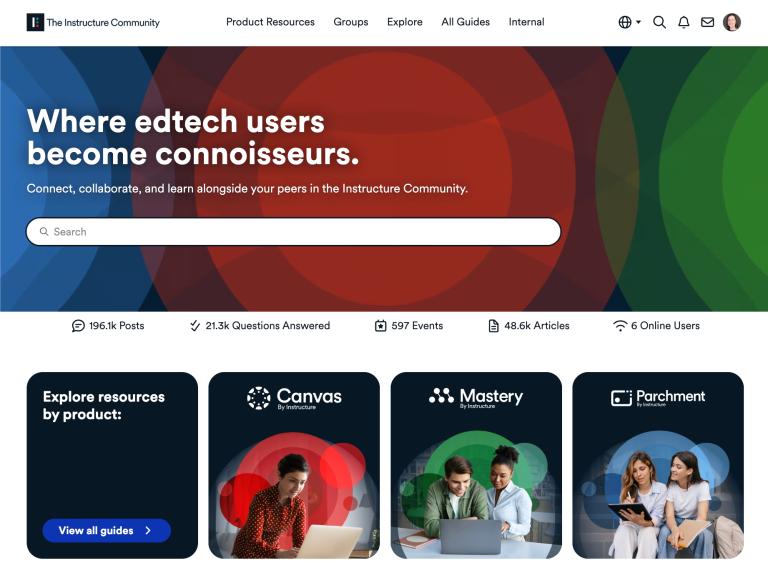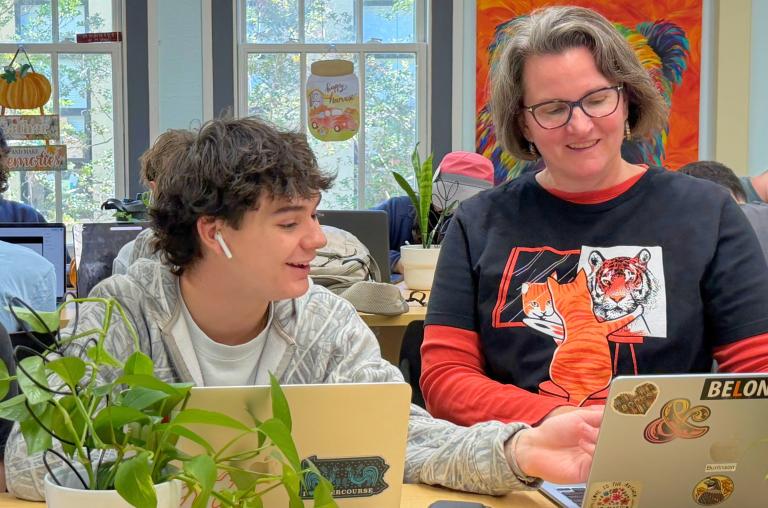Flexibility was a necessity of pandemic-era education. Moving forward, it’s the status quo. HyFlex courses — a hybrid course with increased flexibility — are a popular way to expand access to learning and reach all students regardless of location or learning style.
What is HyFlex? What is the difference between HyFlex and Hybrid?
Hybrid courses combine in-person instruction with online learning but all students are expected to participate in each modality. HyFlex courses amplify flexibility. Each HyFlex class is simultaneously delivered in-person, online (synchronously) and online (asynchronously) — students have the choice of how to participate.
How do HyFlex courses increase accessibility?
HyFlex environments are student-centered and offer equitable access to content. Giving students the option to move between modalities based on their learning needs and location expands participation and reduces barriers to enrollment. Institutions with HyFlex courses also benefit from continuity during campus closures like Covid-19 brought.
How are HyFlex classrooms equipped?
HyFlex courses are not possible without robust technology. Faculty, in-person students and remote students are linked by video, audio, and chat technologies. All course materials are posted on a learning management system and learning objectives are the same for all three modalities.
Best Practices for HyFlex Environments
Survey students
In HyFlex environments, students are given full autonomy on how to attend class, making it difficult to know how many in-person students will show up. Prior to the course beginning, survey students to get a general idea of what modality they plan to use most often. Use this data to guide your lesson planning.
Test technology beforehand
Nothing will impact the success of a HyFlex environment more than technological difficulties. Before your course begins, visit the classroom and test all equipment. Connect your devices and deliver a mock lesson to determine the best setup of cameras, projectors, and presentation screens. Consider the best spot in the room to stand to maximize visibility on video. Ensure all video, audio, and chat tools are functioning properly before class starts.
Allot extra time
Adjust expectations of time for instruction, especially when first implementing HyFlex courses. When planning class sessions, allot time for technology set-up and informal check-ins with in-person and online students throughout instruction to ensure everyone is keeping pace.
Maximize interaction with remote students
Simply streaming an in-person lecture does not make a course HyFlex. Adjust instruction to maximize interaction with online students. Position video conferencing technology to enable in-person students to see remote students and vice versa. Consider using a separate screen to display online students more prominently. Ensure remote students are included in all discussions and provide opportunities for them to participate in real-time. Live polls and collaborative documents can bridge the gap between both groups. Pair up in-person and online students to boost engagement and build community.
Monitor chat
Frequently monitor the chat and other backchannels to ensure online students’ questions and comments are addressed. Seek assistance from a T.A. or designated student to monitor and moderate the chat stream. Consider displaying the chat on a separate screen in the classroom so in-person students can track the discussion.
Use LMS as a central hub
All instructional content should be available in a centralized learning management
System (LMS) for students to access regardless of what format they are participating in. Organizing course content into modules ensures smooth content delivery for all student groups. Record all in-person activities and lectures for later viewing by asynchronous students. Use discussion boards to assess participation.
Reimagine Assessment
Regardless of how students chose to participate, learning objectives and assessments should be the same. Use a LMS for follow-up assessments (quizzes, discussions) after face-to-face sessions rather than during class, to allow equal access to all groups.
Interested in offering HyFlex courses on your campus?
Read how Champlain College is using innovative tools to seamlessly blend their digital and physical campuses with HyFlex courses.
Related Content
 inst-3step.jpg
inst-3step.jpgBlogs
 community-homepage.jpg
community-homepage.jpgBlogs
 kim-classroom.jpg
kim-classroom.jpgBlogs
